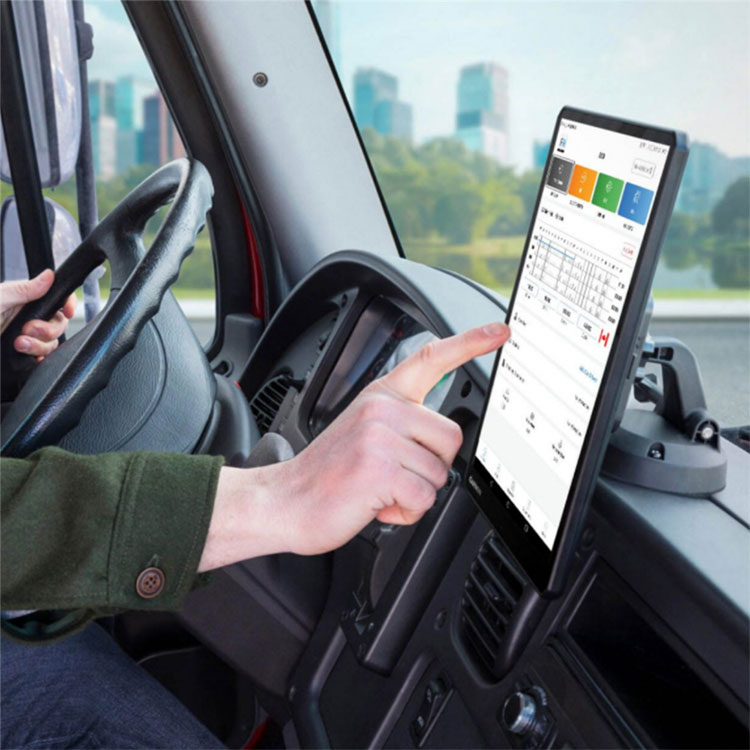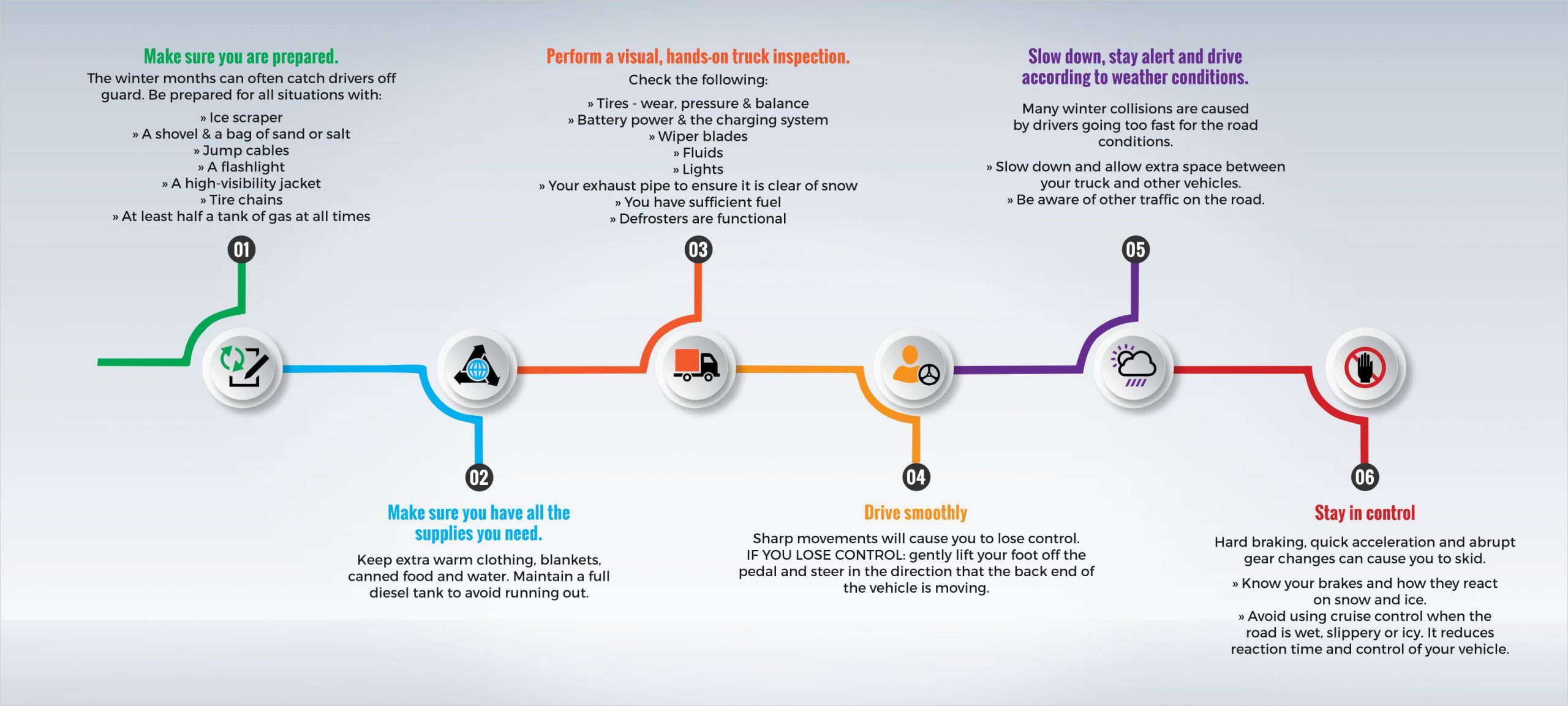

Close

Trucking and Winter are two things that seem like a dangerous combination, but with the right information and skill set you can safely park the truck at your destination.
Here are 9 winter driving tips for fleet truck drivers that can help you stay safe this winter.
Right equipment makes all the difference, make sure you are well equipped before you start your journey. Make yourself ready for every possible situation. Check out the check list below your journey during these gray cold months :
De-icer and ice scraper – front and rear windscreens must be clear of snow and ice before you set off ;
A shovel and a bag of sand or salt – minor roads are generally not gritted and you could get stuck easy to get stuck ;
Jump cables – just in case your truck (or someone else’s) won’t start ;
A flashlight
A high-visibility jacket
A warm blanket, and extra warm clothes – an extra pair will come very handy ;
Food and water – just in case you get stuck and are awaiting recovery or help up in heavy traffic ;
At least half a tank of gas always – journeys make take longer than planned or you may need to find alternative routes ;
To ensure your truck is performing as it should, book a service appointment before it hits the road. Are your fluids topped up? Does your engine make any strange noises? Are all of your lights working?
You should check your:

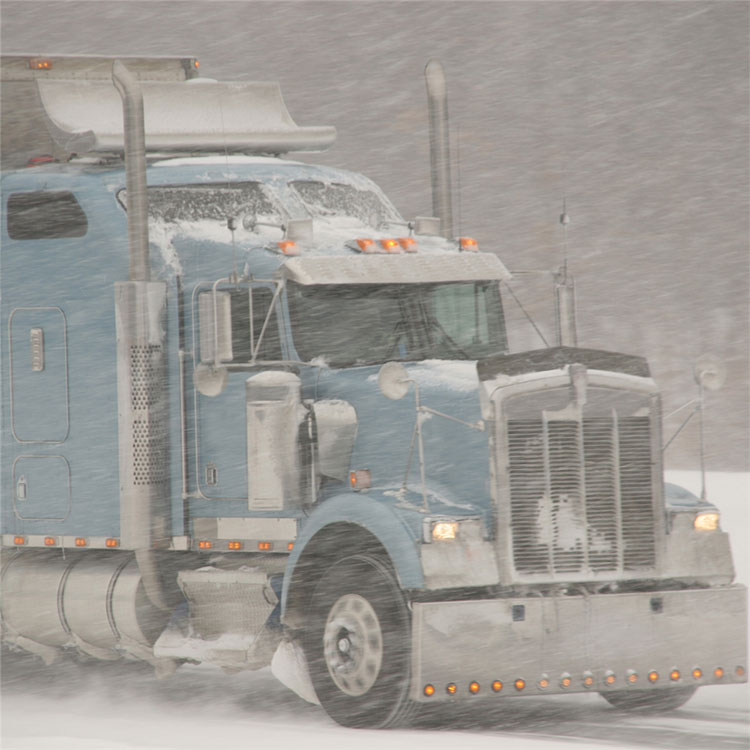
Stay up-to-date with weather information before you begin your journey and stay updated with the changing conditions. A trustee GPS system will be your best friend . This is where FleetHunt can be trusted in knowing where drivers are, the routes that they are taking and timely finding alternative, safer routes.
Stay up-to-date with weather information before you begin your journey and stay updated with the changing conditions. A trustee GPS system will be your best friend . This is where FleetHunt can be trusted in knowing where drivers are, the routes that they are taking and timely finding alternative, safer routes.
First, keep your speed steady. Second, break gently without making sudden movements. If you are driving on slippery icy roads, you should always maintain a safe distance from other vehicles. Over 17% of all vehicle crashes occur during the winter season.
Keep these things in mind:

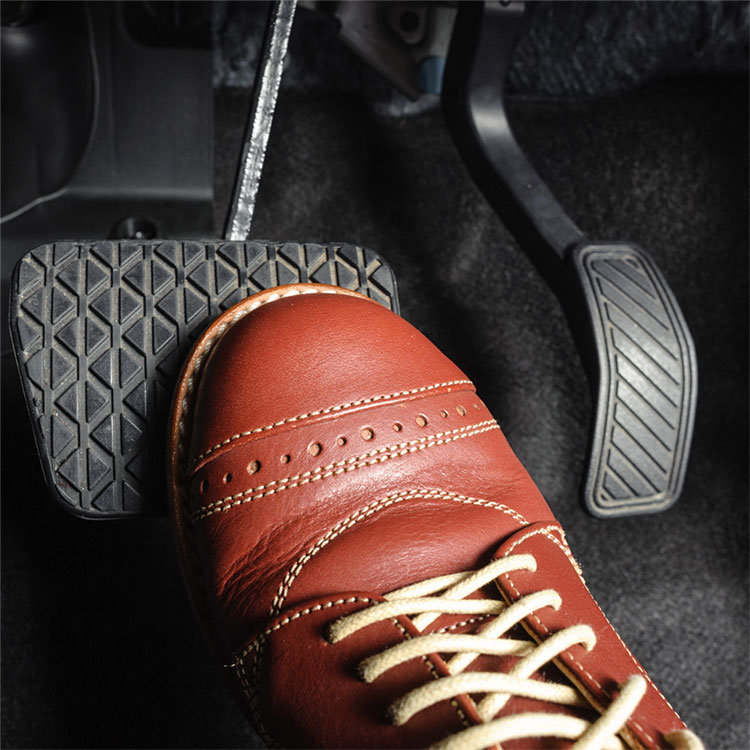
Driving too fast or any sharp movements can cause you to lose control. Also, avoid hard acceleration and brakes. Drive at a constant speed and go easy on the brakes.
Winter trucking, use four or five blinks and only then move over into the next lane. Don’t race or try to match up with the speed of other truckers. Even if you are going slow, use your hazard lights to signal the other truckers of your slow speed.
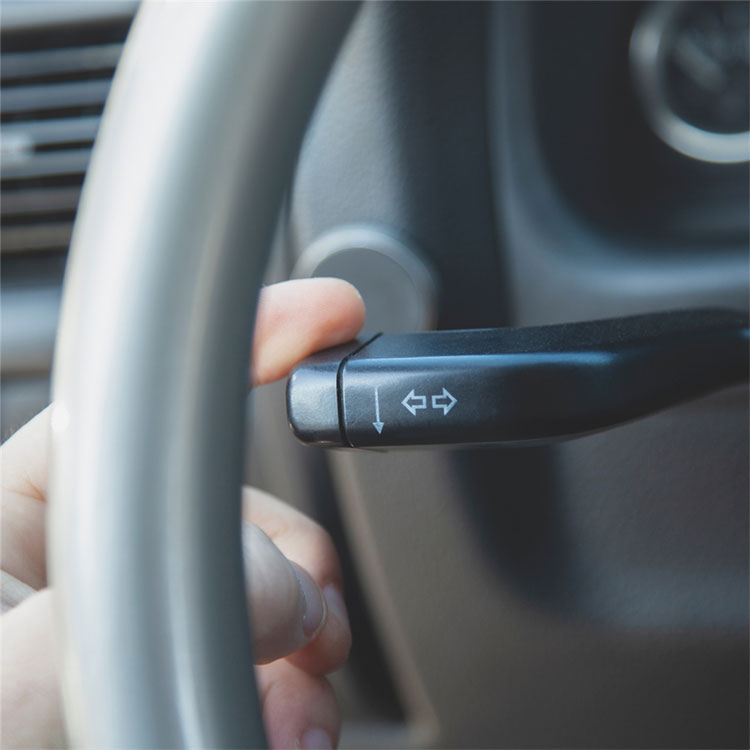
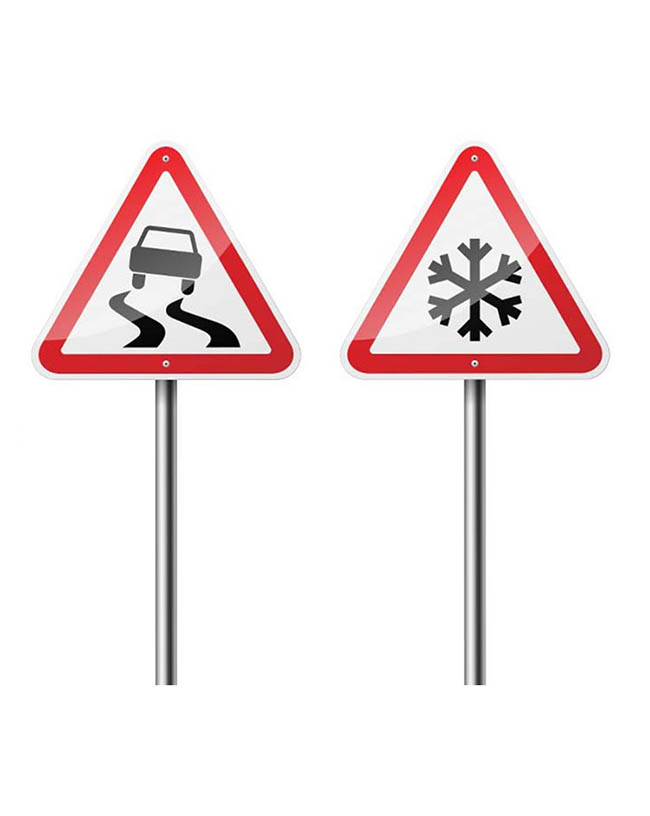
Trucking in winter is a hazard in itself, but look out for these two hazards.
Black ice : Black ice is a dangerous road condition. What appears to be a wet road is actually a thin layer of transparent ice. Watch out for these warning signs:
» A build-up of ice on your trucks mirror or the top corners of the windshield
» If the spray from your tires is not responding the possibility of black ice is quite high.
Fog : When driving in thick fog, slow down, use your lights and use wipers and demisters to keep your view clear.
Heavy rain : Keep a safe distance and watch out for aquaplaning when the tires lose traction on the road due to water. In case you do start aquaplaning, hold the steering wheel straight, gently ease off the gas and avoid hitting the brakes until you regain control.
Bridges : Elevated structures, such as bridges, usually freeze first and are not always treated with salt/sand to melt the snow or ice. During the winter months, be sure to approach these areas carefully, to avoid spinning out or losing control.
Truck drivers often fall and hurt themselves by not being cautious.
Wear boots with a good grip to reduce your chances of slipping and remember to wear your visibility vest!


The winter driving season can be extremely challenging, so don’t hesitate to stop driving if you need to. A gas station or a 24-hour establishment could be a good stop if you want to take a break from driving.
By using your driver management software, you can run reports on behaviour and identify drivers who will benefit from enhanced training.
In addition, driver management software can send reminders and alerts for inexperienced drivers, who exhibit risky behaviour, or those who need to be retrained.
